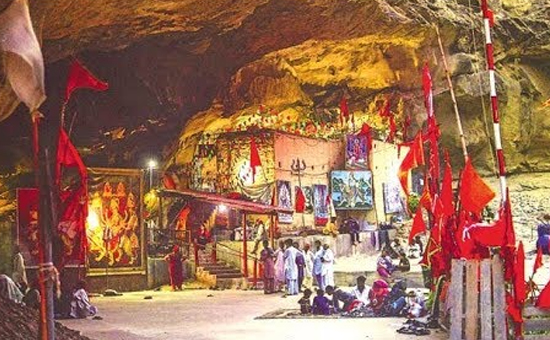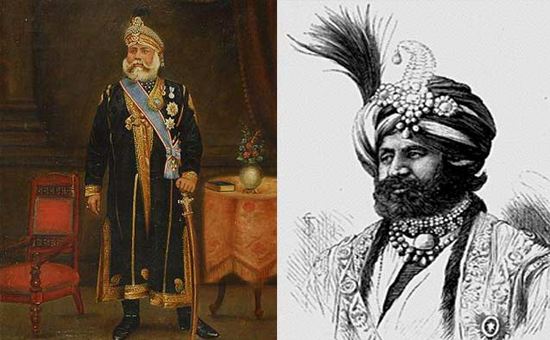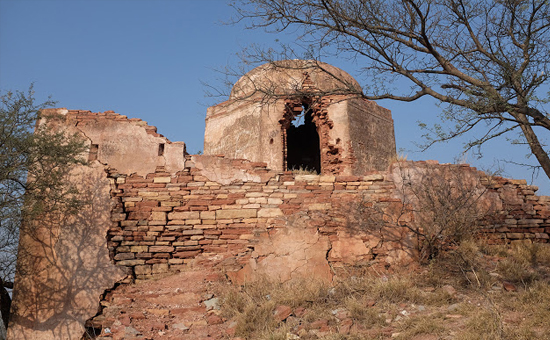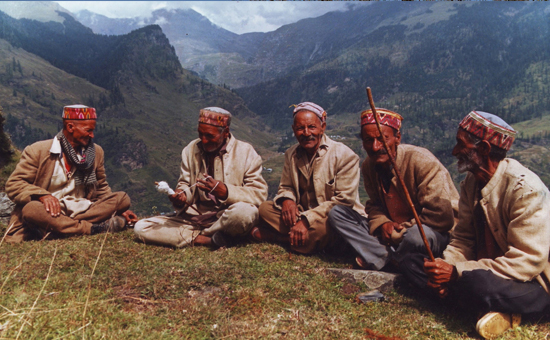-
Article
tells about the brutal Muslim conquest of Sindh, Multan, Afghanistan and how
they used deceit to unsusceptible Hindus to conquer them.
People
across the world today have taken up Vedanta, Bhagawad Gita, Yoga, Ayurved,
Indian classical music, dance and various Indian arts. Writing books, giving
lectures on those subjects and selling related merchandise have earned them fame
and millions. Yet a Hindu is called communal when he talks about the Dharma
that is the basis for this Spirituality and his vast, variegated accommodating Sanatana Dharma is termed as
intolerant.
Conversely, a creed that conquered large parts of Asia and Africa within a few years, took seventy years to step into India, another five hundred to reach Delhi and few hundred more to reach South India and got wrapped up with the rise of the Marathas is looked at as the epitome of virtue and tolerance. Our prolonged National struggle is taught to us as 'Muslim conquest of India’ in our history books whilst we are termed as Hindu Terrorists by the Western academia & their ilks.
To
safeguard the integrity of the Nation under assault by the Islamic world and Western
academia, we need to acquire knowledge about ourselves, our enemy and glorious
past and the several ideological aggressions mounted against our Society.
The
culture that refuses to come to terms with our Samskriti, which uses force and
fraud in the name of religion and harbours imperialistic ambitions is
flourishing on our soil in the garb of being a minority. They claimed
and were granted special privileges from those who fought their tyranny from 715
to 1761 A.D., faced their atrocities during the Freedom struggle right up to
1947 and post-independence in 1989, Godhra, Kairana...?
Can one expect anything else when the barbarians stepped on our soil with such
instructions from their religious leaders? For example -
"When you encounter the unbeliever, strike off their heads...., make a great slaughter among them.., those who survive, bind them in bonds, pardon no one, spare none of them..”- Al Hajjaj bin Yousuf (661-714). The governor of the Umayyad caliphate said this in a letter to Bin Qasim, his seventeen year old nephew and son-in-law.
It was the Baluchs who put up a stiff resistance against the first Arab Muslim attack on Makara in 638 and thereafter up to 715, when the Muslims overran Baluchistan and invaded Sindh. The defeats that they suffered at Baluch hands, are documented by Arabs chroniclers as:
"The Hindus of Makaran (Makran) practice Voodoo and Black Magic and so bring Jinns and Shaitan to help them win in war. Hence the Arabs cannot defeat them, the way the Arabs could easily defeat the Persians and the Byzantines."
 Hinglaj Mandir
Hinglaj Mandir
The
Hinglaj Mata Mandir/ Nani Mata Jo Mandir, the pilgrimage to which starts with a
visit to Baba Chandrakup, a mud filled volcano that has been revered since
Hindu times. The Bugti clan of Balouchs (has both Hindu and Muslim today) are
proof of the long forgotten Hindu heritage of Makara of Baluchistan.
The
Muslim tyranny in India was as blood-thirsty as it was in all other parts of
the world. Hindus fought the Muslims on the battlefield but did not slaughter
Muslim civilians giving them the choice of Hinduism or death, molest Muslim
women en masse, destroy mosques, impose a penal tax like jaziya on non-Muslims and build Mosques over Temples after emerging
victorious. There is no record of the defeated Muslim women saving their skins and
avoid conversion to Hinduism by jumping in to the common fire as Hindus did in Jauhar.
The Hindus were not compulsive mass murderers as were the Crusaders, the Franks
and the Mongols but after the initial setbacks, they grew wiser relatively
faster and paid back Muslims in their own coin. Whereas, to put an end to the
relentless barbarism of the Muslims, the Crusaders overwhelmed them with even
greater barbarism in their first rush itself. They not only slaughtered the
Muslims, but went further to roast and eat them in a gruesome barbecue.
With this reversal of attitudes of ravaging the
ravagers with a force more barbarous they defeated the Muslims.
Muslims
invaded Persia in 634 and Sindh in 638, while Persia succumbed by 651, i.e. in
seventeen years, it took them seven hundred years to overrun India. They were
repeatedly defeated by the Rajas of Makara/ Makran and Sindh for more than
eighty years.
Raja Dahir
To
prevent Qasim from crossing the Indus River, Raja Dahir moved his forces, led
by son Jaisindh, to the eastern banks at Jitor.
Bin Qasim
had heard that the strength of the Sindh army lay in the massive Hindu temple
inside the fort of Debal (from Deval meaning Temple), an important trading
city in Sindh. The temple was garrisoned by 4,000 Rajputs, 3,000 Brahmins
and the Hindus could not be defeated as long as the Bhagwa flag fluttered atop
the temple.
Using foul tactics, he kidnapped three children of the chief guardsman of the
fort of Debal. Beheading one & threatening to behead the other two, they
blackmailed their father into leaving a secret trap door open. Despite a
bold fight, the Hindus suffered defeat and the seventeen year old Mohammed-ibn-Qasim,
on the orders of Al-Hajjaj, captured Debal for the Ummaid Caliphate.
A huge
booty and a large number of women fell into the hands of the Arabs. On refusing
to embracing Islam, thousands of Hindus including Brahmins were mercilessly
butchered. The massacre continued for three days.
From Debal Qasim marched north taking Nirun, ruled by Raja Dahir’s son Jai Sindh, Sehwan ruled by Dahir's cousins Bajhra and Sisam, the capital of the Jats of Budhiya, ruled by Kaka. It is said that Nirun fell because of the treachery of its Buddhist citizens, Bajhra took shelter in Sisam after his defeat, Kaka was defeated and Bajhra and his followers were killed. One fifth of the booty and slaves were sent to the Caliph and Hajjaj.
 Raja Dhir
Raja Dhir
The powerful king of Sindh, Raja Dahir, with a huge army of 50,000 sword men, horsemen and elephantry fought Qasim at Rawar on 20th June 712 A.D. Stuck with a burning arrow, Dahir’s ‘howdah’ was set flame and an injured Dahir fell of his elephant. The frightened elephant ran towards the river Sindhu. Dahir resumed fighting riding on a horse back. He was killed after two days of a bloody battle, his head was cut off and sent to Hajjaj.
Refusing
to surrender the fort of Rawar,
his widow Queen
Ranibai fought the invader
and performed jauhar in the end.
It took
Qasim about eight months to take control of Sind as he had to face tough
resistance by the people of many towns including Alor and Brahmanabad. Killing
many, he enslaved thousands of men, women in Debal, Rawar and Brahmanabad, all
under the age of 30 were put in chains, all capable of bearing arms were
beheaded.
Qasim marched towards Multan but the city was strongly fortified and its people stood in full revolt. After Qasim cut-off the source of water supply to the city, Multan fell into the hands of the invader in 713 A.D. The Arabs massacred and plundered the city. Women and children were made captives and a large quantity of gold was collected by the Arabs. He obtained so much gold that they named the city as the ‘city of gold’.
In this treacherous attack on Sindh, Qasim kidnapped two princesses Suriya and
Preemal of Raja Dahirsen Debal and sent them as a gift with a message that they
were royal virgins, meant to be ravished by his holiness - the Caliph
himself.
As described by Historian Mir Massum in his “Tarik Sind', "these princesses outsmarted the Caliph and conveyed to him that their modesty had been violated by Qasim. Chained and locked in a barrel with nails on the inside of it, he was rolled down a hill". The Caliph is recorded to have been filled with remorse on discovering the truth and ordered the sisters to be buried alive in walls.
The Chach Nama also attributes the death of Qasim to these brave girls.
After
occupying Sindh, the Arab Muslims attacked Punjab, but were repulsed, attacked
Rajputana, but were repulsed by Kings like Raja Bhoj, and when they attacked
Gujarat, they were defeated by the Chalukya - Solankis of Anahilwada at the
battle of Mount Arbuda / Abu.
When
Arabs failed to conquer India, Turks and Mongols (Mughals) took up the Jihad
against India.
Sabuktagin’s spies had told him that the Hindus did not fight from sunset till sunrise. Foul tactics were used by the Muslims, they muffled the sounds of their horses by covering their hooves with felt and cloth to ensure the secrecy of their advance.
They plundered
and destroyed Hindu shrines at Purushapura/ Peshawar, Luvkushpura/ Lahore,
Mulasthana/ Multan, Somnath at Prabhash Patan in Gujarat, Palitana,
Staneshwara/ Thanesar, Mathura, Kannauj, Khajuraho regularly every year with
the aim of collecting a large booty and take Hindus to be sold into slave
bazaars of Baghdad and other Muslim cities is seared in Hindu memory even
today.
Unable to
make any headway into India from their occupation of Sindh in 715 up to 980,
instead of attacking Rajasthan, Punjab and Gujarat from Sindh, using another
gateway they attacked the Shahiya kingdom in
Upaganastan/
Afghanistan
. The first Turko-Persian Muslim chieftain to attack the
Hindu domains was Sabuktagin.
Hindu Shahis and the Battle of Kubha/ Kabul, 980-1001 C.E.
The Hindu-Shahi kingdom of Jayapal
Shahiya (964-1000), son of Asatapala Deva descendant of the Pandavas and the
Raja of
Kubha/ Kabul extended to Kabul from the West, Bajaur to the North, Multan to the South, and the present day India-Pakistan border to the East.
Seeing the danger of the Ghaznavids rising to power, Jaypal
attacked the city of Ghazni during the reign of
Alptigin and his son
Mahmood
. Alptigin had
seized Ghazna during the fall out of
Samanid of Bukhara.
His
slave Sabuktigin, married his daughter and ruled Ghazni after his death.
Forcing
his way up to the domains of
Hindu-Shahis, Sabuktagin challenged Jayapal Shahiya to an open
warfare.
True to
his word, Raja Jaypal reached the appointed place one day earlier to the day of
war. The two adversaries exchanged ambassadors and decided that the hostilities
would commence at sunrise the next day.
After the
Hindus had retired for the night, taking cover of the dark stormy night,
dressed in black, covering the hooves of their horses with felt and cloth,
the Muslim Arabs attacked the sleeping Hindu army at 2 am
.
Caught unaware, half awake, struggling to prepare themselves for war, the
Hindus put up a stiff fight against their beastly adversaries but were
overpowered past dawn. They retreated back to Kabul with the Muslims in hot
pursuit.
After
killing 15,000 fighting men, 5 lakh beautiful men and women were enslaved, Raja
Jaipal, his children, grand-children, nephews, relatives, chief men of his
tribe were taken prisoners, bound by ropes, their hands tied behind their
backs, some were seized by the cheeks, some driven by blows on their
neck.
On Thursday the eighth day of Muharram, November 27 1001 A.D, Raja Jaipal was publicly paraded at a slave auction at Khurasan, so that his sons and chieftains could see him in a shameful state of disgrace and the fear of Islam might fly abroad through the country of the non-believers. A necklace of large pearls, gems and rubies set in gold was taken off from Jaipal’s neck, the value of which was two hundred thousand dinars. Twice that value was obtained from the necks of those of his relatives who were taken prisoners or slain. The amount of booty was beyond all calculation.
Qasim stated
conditions of peace with Raja Jaypal. After demanding fifty elephants Qasim sent
him back to his country, keeping his son and grandson as hostages till the
terms imposed were fulfilled. Jaypal could not bear the humiliation and
immolated himself in a funeral pyre.
 Kusak Fort of Shahiya Dynasty
Kusak Fort of Shahiya Dynasty
The
Muslims poisoned the elephants of the Hindus at the Battle of Lahore to snatch victory
once again using subterfuge.
Anand Pal Shahiya
Anand Pal Shahiya, Jaipal's son, shifted his capital to Udabandapura, in modern-day Khyber Pakhtunkhwa/ Paktoonisthan,
the province of the Pakhta tribe mentioned in the Mahabharat, and finally to Luvkushpura/
Lahore.
Anand Pal allied with forces from the kingdoms of Delhi, Ajmer, Kalinjar, and Kannauj and assembled a larger army of 100,000 horses and an innumerable host foot to oppose the invading Muslims who were led by Sabuktagin’s son Mahmud of Ghazni.
The
armies met on the banks of the Ravi near Lahore. The Muslims were worsted by
the Hindus who led the attacks using armour-clad elephants, pushing the Muslims
up to the foothills of the Paariyatra Parvat/ Hindu Kush mountains.
The
Paariyatra/
Pāriyatra Parvat is shamelessly called 'Hindu Kush', meaning, 'the Killer of Hindus', a name given by the Muslim to the Western Himalayas! (Persian Kush means, to kill).
The
Muslims sent an envoy to Anand Pal, suing for peace, that they be allowed safe
passage out of the country. As a gesture of goodwill they wanted to come to the
Hindu camp for a common meal with them and seal the peace treaty. Against the
advice of his allies, an unsuspecting Anandpal agreed to meet the treacherous
Muslim marauders.
The Muslims came for the luncheon arranged on the banks of the Ravi river where the Hindu army had encamped. While intermingling with the soldiers, they moved about towards the stables of the Hindu camp expressing surprise at the Hindus feeding their mighty elephants. Unsuspecting, Hindus with the belief of ‘Athithi Devoh Bhava’, showed them around the elephant stables,
the Muslims secretly fed the elephants poppy seeds
(opium) mixed with fruits
.
Hindus self-satisfied that the war was over and the peace sealed, began dismantling their camp but in the next few hours they were surrounded and attacked by the Muslim cavalry with cries of Allahuakbar. Realizing that they had been double crossed, the Hindus mounted their elephants and charged. They were in for a shock when their elephants refused to obey their mahout's (the opium showed its effects) orders and started running helter-skelter.
Anandpal’s elephant ran a considerable distance away from the battle. Muslims spread the word that Anandpal was retreating. Isolated from his main army, he was pursued by the Muslims, surrounding him they cut down the leather belts that held his howdah on the elephant & as it fell, they decapitated & beheaded him, stuck his head on a spike and paraded it before the confused Hindu army. A grisly sight never seen in battles before, unnerved Anand Pal's army. Their retreat turned into a rout, with many of them massacred on the battlefield.
Betrayal of the innate faith the Hindus placed even in an unscrupulous
treacherous enemy, turned a Hindu victory into a Muslim one
(with the use of
subterfuge). Hindus continue to behave like this today too, though the change
is gradual.
Using the
patented Muslim mechanism of trickery, Trilochanpal was kidnapped and murdered
by Muslims dressed as Hindu Sanyasis.
Tirlochanpal Shahiya
The
seventeen year old grandson of Jayapal Shaiya, Tirlochanpal Shahiya took the
reins of the death struggle against the Muslims in to his hands. He shifted his
capital from Lahore to Kangra where he tried to reorganize the defence of his
reduced Shahiya Empire that had once stretched from the rivers Yamuna to
Kabul.
The Shahiya Empire which stretched from Herat to Hardwar, was a now one fifth its size. Herat, once its western border was now pushed a thousand miles East at Kalka in the Shivalik Hills. The shrunk Shahiya domains were no more in a position to block the further advance of the Muslims into the Indian heartland. But he followed the valiant example of his father and grandfather and allied himself with the kings of Kashyapmeru (Kashmir) and Tibet, to eject Muslims from Punjab and Upaganasthan (Afghanistan).
Mahmud Ghazni, sent a group of his soldiers dressed up as Hindu mendicants to meet Tirlochanpal. Pretending to have come from Kubha/ Kabul with a message for their king, they gained entry into Tirlochanpala’s headquarters at the fortress of Kangra.
The unsuspecting young prince was
surrounded and beheaded
. The barbarians made off with his severed head,
leaving a note beside his headless body:
"Islam will finally overcome anyone who decided to block the path of Allah’s soldiers."
A few
days later, in 1020 C.E, the fort of Kangra, was sacked off its opulent riches
by Muslim army.
Bheempal Shahiya
Son of Tirlochanpal, succeeded his father in AD 1021 C.E. and was the last emperor of the famed Shahiya Dynasty. His kingdom was now at its lowest point. He personally commanded the battle of Nandana and wounded the Ghaznavid army commander Muhammad bin Ibrahim at-Tāī. Bheempal was killed in 1026. Abd al-Jabbar ʻUtbi in Kitabi-i-Yamini, refers to Bheempal as, ‘Bhīm, the Fearless’.
“Thus after 23 years we find the Muslim governors, left in India, East of the Indus.”- Briggs, the translator of Ferishta.
Bhimpal's widow and with minor sons took shelter in Kashmir.
The
leaderless surviving remnants of the once formidable Shahiya army migrated deep
into the Himalayas and
settled down as
goat-herds known today as Gaddis
. They still come down to the Shivalik
foothills and the plains of Punjab in the winter to graze their cattle.
Thus ended, with Bhimpala, the last scion of the
Hindu dynasty that ruled Afghanistan
. The memory of a dynasty that had
held guard at the North West frontier of India since the days of the Kushans in
the 3rd century C.E. disappeared into the sands of time leaving only the gold
and silver coins artfully minted by them as reminders.
 Members of the Gaddi Tribe
Members of the Gaddi Tribe
The
defeat of the Shahiyas opened the Indian heartland to the marauder invaders
enabling Mahmud of Ghazni to repeatedly attack India.
Millions
of Hindu captives were transported on foot across the Western ranges of the
Himalayas, many died on the way due to the merciless treatment of their cruel
captors!
Part two shall be published shortly
References
1
History of India. Edited by A. V. Williams Jackson, Professor of
Indo-Iranian Languages in Columbia University, Volume 5-The Mohammedan Period
as Described by its Own Historians.
2
The Sword of the Prophet: History, Theology, Impact on the World
by Srdja Trifkovic.
3. The False Prophet by Ellis H. Skolfield.
4. Perfect Soldiers: The Hijackers: Who They Were, Why They Did It by Terry McDermott.
Also read
1
Sacking
the Sub-continent Taimur
2
Rani
Padmini and Alauddin Khilji
3 Sir Syed and India’s Islamic Surgery
4
The
wonder that was Khorasan